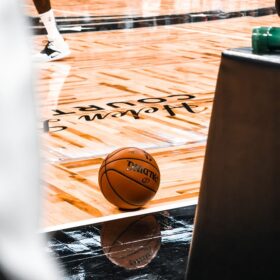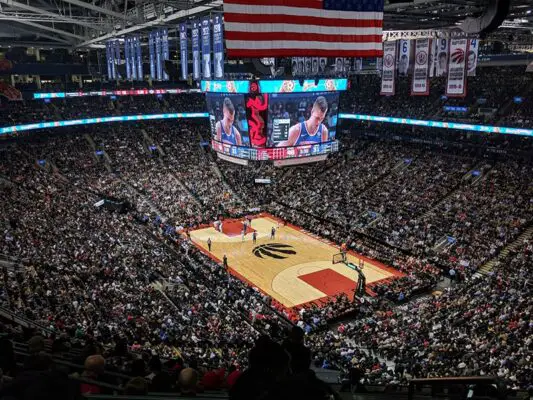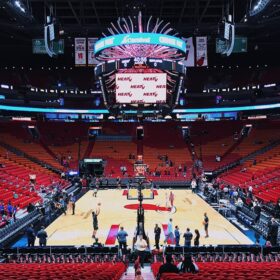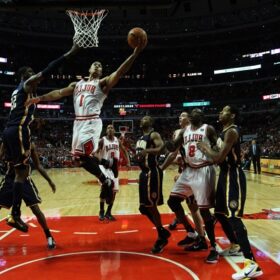The National Basketball Association’s Early Years
June 6, 1946 marked a significant milestone in the history of basketball as the Basketball Association of America (BAA) was established. This organization eventually evolved into the National Basketball Association (NBA) that we know today.
Less than four months later, the New York Knickerbockers squared off against the Toronto Huskes in what is known as the first game in NBA history. The American Basketball League (ABL) attempted to take hold as a professional basketball league, but the BAA was the first league playing in large cities in front of substantial crowds.
Early Competition in the BAA
Despite the large crowds, the competition wasn’t much better in quality than independent teams.
Case in point, NBL teams from Rochester, Fort Wayne, Indianapolis, and Rochester all made the leap to the BAA, which became the league top collegiate players went to become professional.
Expansion and the Creation of the NBA
In early August of 1949, six other franchises (Anderson, Sheboygan, Denver, Waterloo, and Syracuse) made their way into the BAA. The league then changed its name to the National Basketball Association (NBA) and retains its name to this day.
 Original 17 NBA Teams
Original 17 NBA Teams
The NBA feature 17 teams scattered about large and smaller cities across the United States. They played in three divisions with five teams in the Central Division, and six in both the Eastern Division and Western Division.
The Syracuse Nationals had the league’s best regular season record of 51-13, but the Minneapolis Lakers were the first NBA champions after going 51-17 in the regular season behind the play of center George Mikan, who led the league in scoring at 27.4 points per game.
The Rookie of the Year was Alex Groza of the Indianapolis Olympians. Groza played only two seasons in the league before being suspended for betting on college games.
Reduction in Teams
The 17-team league was short-lived, as the NBA reduced to 11 teams in the following season. They were reduced to a select eight teams in 1954-55, which included the Philadelphia Warriors, Boston Celtics, Minneapolis Lakers, Rochester Royals, Fort Wayne Pistons, Milwaukee Bucks, and Syracuse Nationals.
Although six of those franchises relocated, all eight remain a part of the NBA.
Breaking the Color Barrier
All the players in the BAA were white during the first season, but the color barrier was quickly broken, as Japanese-America Wataru Misaka played in three games for the Knickerbockers in 1947-48. The first African American player was Harold Hunter, who played in 22 games for the Washington Capitols in 1951-52.
The first champions of the BAA were the Philadelphia Warriors, who defeated the Chicago Stag, four games to one in 1947. The following season, the Warriors returned to the championship, but fell to the Baltimore Bullets, four games to two.
The Minneapolis Lakers and George Mikan’s Dominance
The Minneapolis Lakers won five of the first six NBA Championships and were considered the first dynasty of the league.
George Mikan established himself as the best player in the league, leading the NBA in scoring in each of his first three seasons and averaging over 20 points per game in his first five seasons.
Introduction of the Shot Clock
During the early stages of the NBA, weaker teams would try to hold the ball for long periods of time, particularly against the Lakers, to keep Mikan from dominating the game. This sometimes worked but led to very low scoring and monotonous games. To encourage more offense, the league introduced the 24-second shot clock in 1954.

Boston Celtics Dynasty and the Rise of Wilt Chamberlain
The Syracuse Nationals and Philadelphia Warriors ended the Lakers’ dynasty, winning the championship in 1955 and 1956. In 1957, the start of another dynasty began after the Celtics drafted rookie center Bill Russell.
He joined a team that already had all-star guard Bob Cousy and head coach Red Auerbach. The Celtics went on to win 11 titles over the next 13 seasons, and added the likes of John Havlicek, Sam Jones, Tom Heinsohn, K.C. Jones, Satch Sanders, and Bill Sharman.
While the Celtics dominated team play, the most dominant single force during the 1960s was center Wilt Chamberlain, who entered the league with the Warriors in 1959. He averaged 38 points per game and 28 rebounds per game as a rookie.
Wilt Chamberlain led the league in scoring and rebounding for each of his first four seasons in the NBA, setting records that still stand today. His 100-point game against the Knickerbockers on March 2, 1962 remains the highest scoring single-game performance in NBA history.
He averaged over 50-points per game that season, which will likely never be broken. The rivalry between Russell and Chamberlain is one of the best in NBA history.
Expansion and the American Basketball Association

During the 1960s, the NBA continued its evolution with the movement of the Lakers to Los Angeles, the Warriors to San Francisco, the Nationals to Philadelphia (later to become the 76ers), and the Hawks from St. Louis to Atlanta. In addition, the Chicago Packers became the 9th team in the league in 1961.
The NBA expanded quickly in the mid-to-late 1960s, increasing from nine to 14 teams over a two-year period. Five of those expansion teams, including the Oklahoma City Thunder, Houston Rockets, Chicago Bulls, Milwaukee Bucks, and Phoenix Suns, are still part of the NBA today.
In its first two decades, the NBA faced little competition, but that changed with the emergence of the American Basketball Association (ABA) in 1967.
While the NBA was able to sign UCLA star Kareem Abdul-Jabbar (then known as Lew Alcindor), the ABA signed Rick Barry, the NBA’s top scorer at the time, who jumped to the new league. The ABA also attracted veteran referees and numerous other top talents who would go on to be inducted into the NBA Hall of Fame.
After years of competition, the ABA and NBA eventually merged in 1976, leading to the dissolution of the ABA as a separate entity.
Conclusion
The NBA’s early years were filled with expansion, consolidation, and the emergence of legendary players and dynasties. The top players in the league during the first decade were mainly big men.
Vern Mikkelsen, George Mikan, Harry Gallatin, Larry Foust, Bill Sharman, Ed McCauley, Bob Pettit, Paul Arizin, Dolph Schayes, and Neil Johnston were the main attractions during this period.
While centers continued to dominate play during the second decade in NBA history, guards began to make an impact. The top ten players of the 1960s include Jerry Lucas, Elgin Baylor, Bob Pettit, Sam Jones, Walt Bellamy, Bill Russell, Wilt Chamberlain, Bailey Howell, Jerry West, and Oscar Robertson.
Nowadays, NBA has become a global sensation, presenting the world with the finest athletes and constantly adjusting to modern rules, technologies, and cultural changes. The league features 30 teams from different cities worldwide, where individuals from various backgrounds strive to earn the title of NBA champions.
NBA’s humble origins have now blossomed into one of the most prosperous and cherished sports organizations globally.





